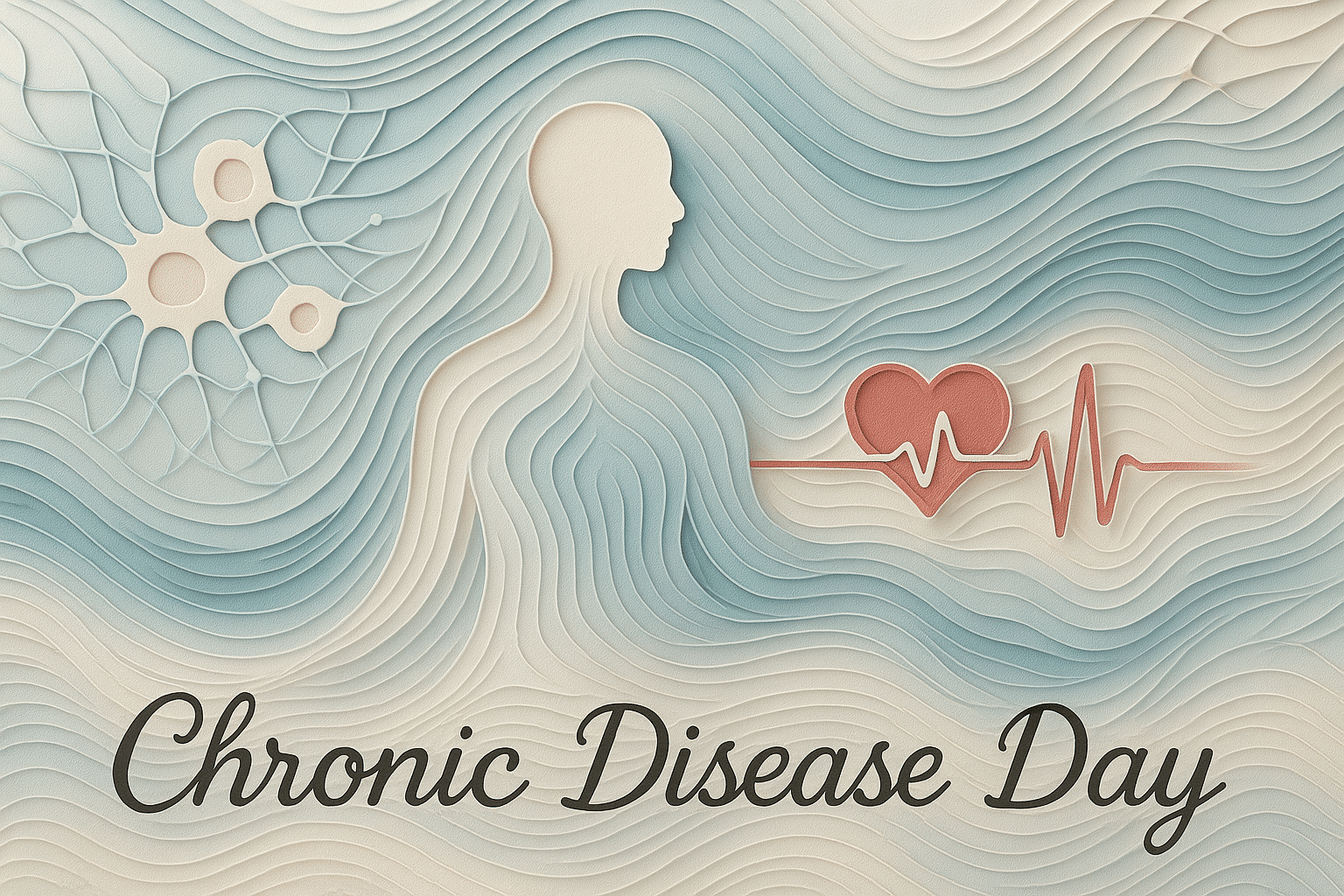What is Chronic Disease Day?
Chronic Disease Day is observed annually on July 10 to raise awareness about the impact of long-term health conditions such as heart disease, diabetes, cancer, arthritis, and respiratory illnesses. These conditions often require ongoing care and can significantly affect daily life. The day aims to highlight the challenges faced by individuals living with chronic diseases and to promote strategies for prevention, management, and improved access to care.
The observance encourages open conversations about chronic illnesses, aiming to reduce stigma and foster a supportive environment. It also serves as a platform for healthcare professionals, policymakers, and communities to collaborate on initiatives that enhance the quality of life for those affected. By focusing on education and advocacy, Chronic Disease Day seeks to drive systemic changes that benefit individuals and society as a whole.
History and Origin
Chronic Disease Day was established to correspond with the date 7/10, symbolizing the statistic that 7 out of 10 deaths are due to chronic diseases. The initiative was founded by the non-profit organization Good Days in 2014, with the goal of bringing attention to the prevalence and impact of chronic illnesses.
Since its inception, the day has gained national recognition, with numerous states and cities issuing proclamations in support. Events and campaigns are organized to engage the public, share personal stories, and advocate for policy changes that address the needs of those living with chronic conditions. The observance has become a catalyst for ongoing efforts to improve healthcare systems and promote healthier communities.
Who participates in Chronic Disease Day?
- Patients: share personal experiences to raise awareness
- Healthcare providers: offer educational resources and support
- Advocacy groups: organize events and campaigns
- Policymakers: engage in discussions to improve healthcare policies
- Community members: participate in local events and initiatives
Slogans and Themes
Chronic Disease Day emphasizes themes of resilience, awareness, and advocacy. Common slogans include “I Stay Strong,” “Chronic but Courageous,” and “Together for Health.” These messages aim to empower individuals living with chronic conditions and to encourage collective action towards better healthcare solutions.
Colors, Symbols, and Patterns
Colors
- Orange: represents energy and determination
- Blue: symbolizes trust and stability
- Green: denotes health and growth
Symbols
- Awareness ribbons: signify support for various chronic conditions
- Hearts: represent compassion and care
- Hands: symbolize unity and assistance
Patterns
- Interlocking circles: depict community and interconnectedness
- Waves: illustrate the ongoing journey of managing chronic illness
- Lines and paths: represent individual health journeys
Most used hashtags
- #ChronicDiseaseDay
- #IStayStrong
- #ChronicAwareness
- #HealthAdvocacy
- #SupportChronicIllness
How do you celebrate Chronic Disease Day?
- Share your story: post about your experience with chronic illness
- Attend events: participate in local or virtual awareness activities
- Educate others: provide information on chronic disease prevention and management
- Support organizations: donate to or volunteer with relevant non-profits
- Advocate for change: contact policymakers to discuss healthcare improvements
Why is Chronic Disease Day important?
Chronic Disease Day plays a crucial role in highlighting the widespread impact of chronic illnesses and the importance of comprehensive care. It fosters a sense of community among those affected and encourages proactive measures to prevent and manage these conditions. By promoting awareness and advocating for systemic changes, the observance contributes to the development of more inclusive and effective healthcare policies.
Categorieën
Meer informatie
10 juli: Chronic Disease Day
Waarom word je steeds verliefd op hetzelfde type?
Lees het artikel Lovemaps: de verborgen blauwdruk van onze liefde.

